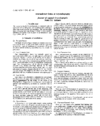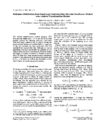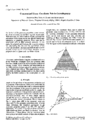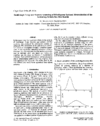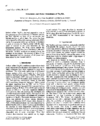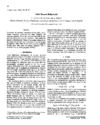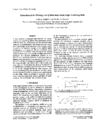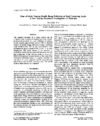issue contents
February 1996 issue

Cover illustration: Neutron scattering pattern in the (hk0) reciprocal-lattice plane from alpha-AgI at 520 K. The portion shown extends from 0 to 5.4 reciprocal-lattice units in both h and k. Courtesy of D. A. Keen, V. M. Nield and R. L. McGreevy.
international union of crystallography
Free 

research papers
A novel method for analysing inverse scattering problems with respect to the formation of real-space distributions is compared with the Indirect Transformation Method.
Systematic differences of coherent domain size and lattice strain among different integral-breadth methods are discussed.
A new kind of coordinate net, the linear coordinate net, is presented and plotted by computer for quick and direct indexing of Laue patterns and determination of crystal orientation.
A new recurrence numerical corrector method to calculate scattering-particle-size distributions for SAXS and SANS experiments is presented.
X-ray powder diffraction characterization of the series Sr2LnTaCu2O8, Ln = Nd, Sm, Eu, Gd has been performed. The crystal structure of Sr2SmTaCu2O8 has been refined from the laboratory X-ray powder data.
Na2SO4 has been reinvestigated by differential scanning calorimetry and by X-ray powder diffraction. The structure of phase II has been determined.
Structure refinement of strongly textured samples using a texture correction based on empirical functions and intensities measured at sample inclinations is described.
A method for the recovery of low-Q scatter intensity data, which also demonstrates that unwanted features in the distance distribution function provide clues to errors in the scatter intensity function, is presented.
The subgrain structure of single crystals of Pb, Cu and Al at room temperature and its evolution under mechanical loading have been investigated nondestructively by a novel technique of combining the neutron time-of-flight method with the detailed analysis of double Bragg reflections at small scattering angle.
computer programs
This paper presents a computer routine to conduct rapid searching and centering of diffraction peaks in 2θ, ω and φ space. It is essential software for dealing with the orientation-shifting problem in high-P-T diamond-anvil-cell single-crystal diffraction studies.


 journal menu
journal menu









